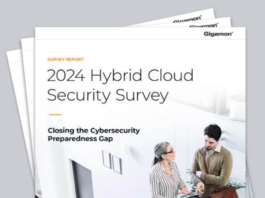Exciting innovations are brewing in the education space, especially with the new capabilities enabled by AI. To support this, schools, however, can no longer rely on legacy infrastructure, which has likely existed for decades.
Australia’s Bond University faced this dilemma: Should it upgrade its ageing data centre or explore other options?
For Ann Yardley, Director of IT Services at the institution, the solution was an obvious choice.
“We started on the journey of looking for the right tool around April 2023. Rather than looking at another hardware refresh, I wanted to consider something in the cloud that we could use alongside our other on-premises solutions to ensure disaster recovery and move workloads and applications where we need them,” she said.
Driving force
Aside from an ageing data centre, Bond University was also using Windows Server 2012, which was nearing end-of-life in about six months.
“We either had to bring down that whole workload in a very short time while doing hardware upgrades, or we could move it to Azure, get some extended support, and allow us to right-size that solution rather than rush it,” Yardley recalled.
Considering other factors, such as cost and flexibility, Bond University decided to adopt Nutanix Cloud Clusters (NC2).
“First, we wanted no vendor lock-in. Secondly, we wanted a more personalised experience with a vendor, someone who could really guide our small team through what we were trying to achieve,” she said.
According to Indu Keri, General Manager and Head of Engineering for Nutanix’s Hybrid Cloud, public cloud adoption is relatively easier for new customers who have the freedom to start fresh. However, for existing portfolios, refactoring everything before moving to the public cloud can be time-consuming.
“What we provide with our platform is the ability to take your on-prem workload and move it to the public cloud, both on AWS and Azure, as quickly as possible, so you can continue your innovation journey,” he said.
In Bond University’s case, no refactoring was necessary.
“We’re a very small team, so I didn’t want to change and make it more complex for a team that had to learn a new tool. This was supposed to simplify things for the team, not make it harder, so we didn’t refactor anything. This was one of the reasons we chose to adopt NC2. It allowed us to stretch our network from on-prem to the cloud, simplifying things for the team. However, we will look at refactoring in the future,” Yardley shared.
“This infrastructure has allowed us to achieve several goals and saved us from having to make many changes to our existing infrastructure, software licensing, and network configuration,” she added.
Change of pace
After partnering with Nutanix, Bond University quickly saw improvements in its infrastructure. With newfound agility, the university could now support more workload-intensive projects by its students.
“It’s really that experimentation from the academic side and students that we are considering. How do we spin up environments, and how do we manage costs of spinning that up? How do we make sure that IT can get out of the way without it being a risk or costing too much?”, Yardley said.
“It’s really that experimentation from the academic side and students that we are considering. How do we spin up environments, and how do we manage costs of spinning that up? How do we make sure that IT can get out of the way without it being a risk or costing too much?” Yardley remarked.
According to her, Bond University had already moved its big ERP solution to the cloud, as well as about 700 other services.
“We have already moved our financial systems and student management systems, as well as many academic tools. We’ve got four schools: for medical, we’ve got medical solutions; then we’ve got a legal school; for business, you’re thinking of big data and a lot of processing; and finally, for the faculty of society and design, a lot of workload around building and architecture. Then there are the normal corporate-type tools, such as the Microsoft Office suite,” Yardley noted.
Bond University’s ERP currently sits on Azure but will be integrated with other clouds and solutions in the future, the IT Director said.
“It’s primarily more of an option for putting legacy systems there to enable mobility, flexibility, and student access to things, more so than us saying we’ve got all of our data. That’s a process we’re going to go through to ensure we’re putting the right data in the right cloud provider for the right price when moving those workloads. Now that we have the tools to do that, what’s next is looking at our legacy data and moving that as well,” she clarified.
Generally, when enterprises adopt public cloud, it’s their primary workloads that are migrated there, Keri observed.
“When you unpack the reason for that, there will be more apps built in the next five years than in the last 40. Most of them will be built in the public cloud; they’ll be modern and containerised, but they will depend on what’s already been built. These are modern, composable apps, and for them to be useful, they have to build on functionality and APIs that are already there. Therefore, the most effective way to achieve this is to move your primary workloads into a public cloud with minimal initial effort, because the real value lies in innovation,” he shared.
No looking back
Many enterprises are either hesitant to move to the public cloud or too eager to migrate without carefully examining workload compatibility. For Keri, this should not deter enterprises from innovating because every cloud journey is unique.
“The public cloud is a wonderful place for experimentation, and for some workloads which are just very elastic, it’s even the right destination. But not every workload is super elastic, so you really have to be very thoughtful and intentional about this. The public cloud is going to be an important part of enterprise infrastructure. It’s the right place for starting innovation. But what you want as a user is the flexibility to move data and workloads around, and that’s really what hybrid multi-cloud is about,” he said.
As for Bond University, working on a FinOps strategy is on the horizon.
Yardley mentioned that the institution has FinOps on their agenda to ensure they set up automation effectively. This tool will enable them to streamline processes and allow academics and researchers to perform self-service. Additionally, this strategy will help control costs efficiently, as cloud flexibility can lead to significant expenses if not properly monitored.
“Moving forward, my next challenge is to get a good architecture around archiving and data management in the cloud versus on-prem,” she concluded.


